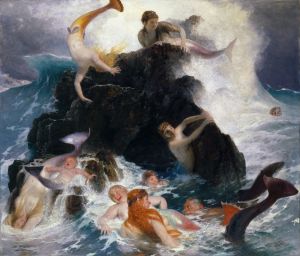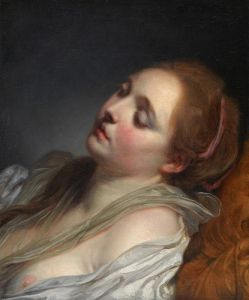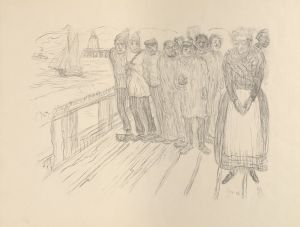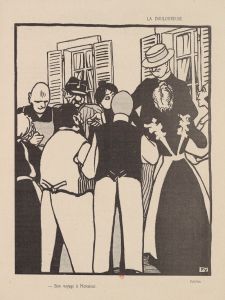
Melancholy
A hand-painted replica of Arnold Böcklin’s masterpiece Melancholy, meticulously crafted by professional artists to capture the true essence of the original. Each piece is created with museum-quality canvas and rare mineral pigments, carefully painted by experienced artists with delicate brushstrokes and rich, layered colors to perfectly recreate the texture of the original artwork. Unlike machine-printed reproductions, this hand-painted version brings the painting to life, infused with the artist’s emotions and skill in every stroke. Whether for personal collection or home decoration, it instantly elevates the artistic atmosphere of any space.
"Melancholy" is a painting by the Swiss symbolist artist Arnold Böcklin. Created in 1869, this work is an evocative representation of the theme of melancholy, a subject that Böcklin explored throughout his career. The painting is notable for its somber mood and the introspective quality of its composition.
Arnold Böcklin was born on October 16, 1827, in Basel, Switzerland. He studied at the Düsseldorf Academy and later traveled extensively throughout Europe, including stays in Rome, Florence, and Munich. His exposure to various artistic traditions and his personal experiences deeply influenced his work, which often features mythological and fantastical elements.
"Melancholy" depicts a solitary figure seated by the edge of a body of water, surrounded by a desolate landscape. The figure, dressed in dark, flowing garments, gazes pensively into the distance, embodying a sense of deep contemplation and sorrow. The muted color palette, dominated by shades of gray and brown, enhances the painting's melancholic atmosphere.
Böcklin's use of symbolism is evident in "Melancholy." The barren landscape and the stillness of the water reflect the inner state of the figure, suggesting themes of isolation and introspection. The painting's composition, with its emphasis on the solitary figure and the expansive, empty surroundings, underscores the feeling of loneliness and existential reflection.
Throughout his career, Böcklin was associated with the Symbolist movement, which sought to express the emotional and spiritual dimensions of human experience through symbolic imagery. "Melancholy" is a prime example of this approach, as it conveys complex emotions and states of mind through its visual elements.
Böcklin's work was highly influential in the late 19th and early 20th centuries, particularly among Symbolist and Surrealist artists. His ability to evoke mood and emotion through his paintings resonated with many contemporaries and later artists. "Melancholy" remains an important example of his contribution to the Symbolist movement and his exploration of the human psyche.
Arnold Böcklin passed away on January 16, 1901, in Fiesole, Italy. His legacy endures through his distinctive body of work, which continues to be studied and appreciated for its emotional depth and symbolic richness. "Melancholy" stands as a testament to Böcklin's skill in capturing the complexities of human emotion and his ability to convey profound themes through his art.


















